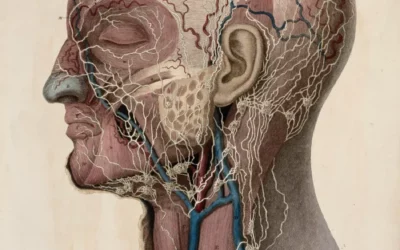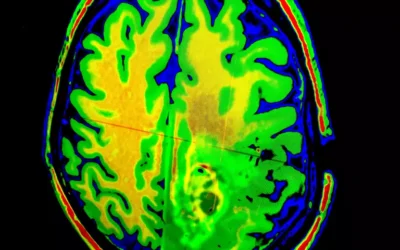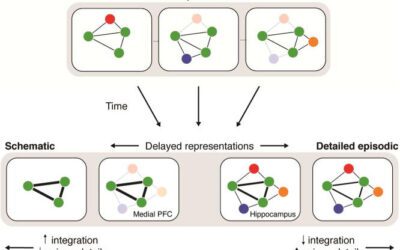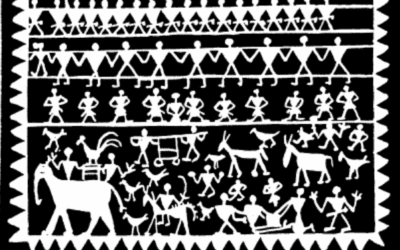Language has always been humanity’s most powerful technology, shaping not just how we communicate but how we think, perceive reality, and construct identity. As we stand at the threshold of unprecedented global connectivity, we face a paradox that would have seemed impossible to previous generations: the very technologies that allow us to communicate across any distance may be fundamentally altering the evolutionary trajectory of human language itself.
The Death of Distance and the Birth of Digital Dialects
For most of human history, language evolution followed a predictable pattern. Groups would separate, whether through migration, geographical barriers, or social stratification. In isolation, their speech would gradually drift, accumulating small innovations in pronunciation, vocabulary, and structure until what began as regional accents became mutually unintelligible languages. This is how Latin, once spoken across the Roman Empire, fractured into French, Spanish, Italian, and dozens of other Romance languages after Rome’s collapse left communities isolated from one another.
The internet has shattered this ancient pattern. Today, a teenager in Lagos watches the same TikTok videos as one in Los Angeles, absorbs the same memes, learns the same slang. They participate in the same digital conversations, share the same cultural references, understand the same abbreviated expressions and emoji combinations. Geographic isolation, the primary driver of linguistic divergence for millennia, has effectively ceased to exist in the connected world.
Yet this doesn’t mean language has stopped evolving. Instead, we’re witnessing something unprecedented in linguistic history: the emergence of what we might call “vertical dialects” or platform-specific registers that exist not in physical space but in digital ecosystems. Discord has its own linguistic norms distinct from LinkedIn, which differs from Reddit, which differs from Instagram. These aren’t regional variations but contextual ones, shifting based on platform, purpose, and community rather than geography.
The Paradox of Acceleration and Stagnation
The internet creates a fascinating temporal paradox in language evolution. Surface features of language now change at breathtaking speed. New slang terms can emerge, spread globally, peak, and become outdated within weeks. The semantic drift that once took centuries now happens in months. Consider how “dead” transformed from literal death to expressing amusement, how “based” shifted from meaning addicted to crack cocaine to expressing authentic self-expression, how “mid” evolved from simply meaning middle to conveying mediocrity. These changes propagate through millions of speakers almost instantaneously.
Yet beneath this rapid surface change, the deeper structures of language remain remarkably stable. The grammatical foundations, the core syntax, the fundamental ways we construct meaning show far less variation than we might expect. Global English, functioning as a linguistic gravitational center, pulls variants back toward a common core. The same media, educational materials, and digital platforms that spread new slang also reinforce standardized grammar and spelling. We’re experiencing fast fashion in vocabulary while the underlying linguistic architecture remains surprisingly conservative.
This creates a new kind of linguistic evolution where innovation happens within increasingly narrow parameters. We invent new words constantly but rarely new grammatical structures. We develop novel ways to express irony or emotion through text but maintain remarkably consistent sentence patterns. The internet accelerates certain types of change while actually slowing others, creating a linguistic ecosystem unlike anything in human history.
The Memetic Colonization of Thought
Hideo Kojima’s exploration of language as a virus in Metal Gear Solid V proves remarkably prescient when we consider how language spreads online. Skull Face’s parasitic weapon that kills speakers of specific languages serves as a dark metaphor for linguistic imperialism, but the reality may be more subtle and perhaps more insidious. English hasn’t spread through biological warfare but through what we might term memetic colonization, where the language doesn’t just replace vocabulary but fundamentally reshapes thought patterns and cultural expression.
When non-English speakers go online, they often must think in English to participate fully in global digital culture. This isn’t just translation; it’s a cognitive restructuring where English linguistic patterns begin to influence how ideas are formed and expressed even in one’s native language. Young speakers in multilingual societies increasingly think in English first when engaging with technology, science, or popular culture, then translate back to their mother tongues. This creates a subtle but profound shift where English doesn’t eliminate other languages directly but colonizes them from within, changing their structures and vocabularies to mirror English patterns.
The tragedy Kojima illustrated through Skull Face’s hypocritical revolution mirrors our current reality. In attempting to resist linguistic homogenization, many languages adopt English loan words, sentence structures, and even conceptual frameworks, becoming hybrid tongues that neither preserve tradition nor fully embrace change. The revolution against linguistic imperialism often accelerates the very colonization it seeks to prevent.
The Emergence of Visual and Gestural Languages
Perhaps the most radical transformation isn’t in spoken or written language but in the emergence of entirely new forms of communication that bypass traditional linguistic structures altogether. Emojis, GIFs, memes, and reaction images constitute a visual language that operates according to different rules than verbal communication. These aren’t simply decorations on text but increasingly function as primary carriers of meaning.
Consider how a single emoji can convey layers of irony, emotion, and context that would require sentences to explain verbally. The “skull” emoji doesn’t mean death but rather indicates something is extremely funny. The “eyes” emoji suggests attention or interest. These symbols have developed their own grammar, their own syntactic rules, their own contextual variations. We’re witnessing the birth of a global pictographic language emerging organically through use rather than design.
This visual turn in language represents something genuinely new in human communication. Unlike the pictographs of ancient writing systems, these digital symbols don’t represent words or sounds but rather emotions, reactions, and meta-commentary on the text they accompany. They function as a kind of emotional markup language, adding layers of meaning that text alone cannot convey. This isn’t regression to primitive picture-writing but evolution toward multimodal communication that engages different cognitive processes simultaneously.
The Crisis of Context and the Death of Subtext
Digital communication has created what we might call a crisis of context that fundamentally alters how language functions. In face-to-face conversation, tone, body language, facial expression, and shared physical context provide crucial information that shapes meaning. Online, stripped of these cues, language must work harder to convey not just information but intent, emotion, and social positioning.
This has led to the explicit marking of elements that were once implicit. Tone indicators like “/s” for sarcasm, “/j” for joking, or “/gen” for genuine represent attempts to encode in text what voice and gesture once conveyed. We’re developing a metalanguage of markers and indicators, creating explicit notation for what was once understood through context. This represents a fundamental shift in how language operates, moving from high-context communication that relies on shared understanding to low-context communication where everything must be explicitly stated.
The psychological implications are profound. As we lose the ability to reliably interpret subtext and implication, we may be losing cognitive capacities for reading between the lines, understanding irony without markers, or detecting emotional nuance without emoji. The explicit nature of digital communication may be rewiring our brains to expect and require clearer, more direct communication while diminishing our capacity for ambiguity and interpretive depth.
The Pidgin of Human-AI Interaction
As artificial intelligence becomes increasingly integrated into daily communication, we’re developing what amounts to a new pidgin language for human-AI interaction. This isn’t a simplified trade language between human groups but rather a structured way of communicating with non-human intelligence that increasingly shapes how we communicate with each other.
The way we phrase search queries, structure prompts for AI assistants, and frame requests for algorithmic systems creates linguistic patterns that bleed into human-to-human communication. We learn to front-load keywords, eliminate ambiguity, and structure information for maximum machine comprehension. These habits, developed for efficiency in human-AI interaction, begin to influence how we write emails, texts, and even how we speak.
This represents an unprecedented development in linguistic history: a pidgin emerging not from contact between human groups but from contact between human and artificial intelligence. As AI systems become more sophisticated and ubiquitous, this pidgin may evolve into something more complex, potentially becoming a creole that native digital speakers grow up with as their primary mode of online communication.
The Preservation Paradox
While the internet accelerates certain types of language change, it also creates unprecedented opportunities for preservation. Every tweet, post, comment, and message creates a permanent record of language as it’s actually used. We now have more documentation of linguistic variation, slang innovation, and semantic shift than ever before. Future linguists will be able to trace the exact moment a word changed meaning, map the spread of new constructions, and analyze patterns that previous generations could only theorize about.
Yet this same preservation creates a kind of linguistic self-consciousness that may actually slow evolution. When speakers know their words are being recorded, analyzed, and preserved, they may become more conservative, more adherent to perceived standards. The permanent record of the internet creates a kind of linguistic panopticon where deviation from norms becomes risky, potentially limiting the very innovation that drives language evolution.
The Neuro-Linguistic Programming of Digital Natives
Children growing up fully immersed in digital communication develop different neural patterns for language processing than previous generations. Their brains wire themselves to process multimodal communication, switching rapidly between textual, visual, and symbolic inputs. They develop what researchers call “continuous partial attention,” able to maintain multiple conversation threads while processing various linguistic registers simultaneously.
This neurological adaptation to digital communication may represent the early stages of a more fundamental shift in human cognitive architecture. As language and technology become increasingly intertwined, we may be witnessing the emergence of genuinely new cognitive capacities for processing and producing language. Digital natives don’t just use language differently; their brains may actually process language through different neural pathways than their parents.
Toward a Post-Linguistic Future?
Some theorists suggest we may be approaching a post-linguistic future where direct brain-to-brain communication, mediated by technology, bypasses language altogether. Neural interfaces could theoretically transmit thoughts, emotions, and concepts directly, without the mediating layer of words. This would represent not just a new phase of language evolution but potentially the end of language as we know it.
Yet even if such technology emerges, the human need for narrative, metaphor, and symbolic representation seems too fundamental to disappear entirely. More likely, we’ll see language evolve to incorporate new modalities we can’t yet imagine, expanding rather than disappearing. Language has survived every technological revolution by adapting and incorporating new possibilities. The digital revolution may transform language beyond recognition, but it’s unlikely to eliminate humanity’s most essential technology.
What We’ve Never Seen Before
So what genuinely new linguistic phenomena are we witnessing? Several developments have no historical precedent:
Real-time global synchronization of linguistic change means innovations spread worldwide within days rather than centuries. We’re seeing the emergence of what might be called “quantum dialects” that exist in superposition, simultaneously global and hyperlocal, formal and casual, sincere and ironic, depending on context and interpretation.
The development of algorithmic languages where humans adapt their communication to be machine-readable represents a genuine evolutionary pressure that has never existed before. We’re evolving language not just for human understanding but for algorithmic processing.
The collapse of temporal boundaries in language means that archaic forms, contemporary usage, and speculative future language can coexist in the same digital space. A single conversation might include Shakespearean quotations, current slang, and sci-fi neologisms, all equally accessible and relevant.
The emergence of ephemeral languages designed to exist only briefly, like the specialized vocabularies of short-lived online communities or the coded languages developed to evade algorithmic detection, represents a new category of linguistic phenomenon: languages designed for deletion.
The Evolutionary Bottleneck
We stand at what might be the narrowest bottleneck in human linguistic history. Never before have so many people communicated through such a small number of languages on such a limited number of platforms. The digital infrastructure that enables global communication also constrains it, funneling human expression through interfaces designed by a handful of companies in a single cultural context.
This bottleneck may be temporary, a brief phase before linguistic diversity reasserts itself through new technologies and platforms. Or it may represent a permanent shift toward linguistic consolidation, where humanity develops a unified communication system supplemented by local variations rather than genuinely distinct languages.
The trauma therapist in me recognizes this as a kind of collective linguistic trauma, where entire ways of thinking and being encoded in minority languages face extinction. Each language that disappears takes with it unique ways of understanding trauma, healing, relationship, and meaning that can never be fully translated. The therapeutic implications of losing these linguistic resources for understanding human experience are profound and largely unexplored.
The Return of the Repressed
Yet language, like the psyche, has ways of asserting suppressed elements. The very forces attempting to homogenize language create conditions for new forms of diversity. As official channels become surveilled and standardized, underground languages emerge. As AI becomes better at processing standard language, humans develop increasingly creative ways to communicate that machines cannot parse. As platforms impose linguistic norms, users develop elaborate codes and subdialects that subvert those norms from within.
We may be witnessing not the end of linguistic diversity but its transformation into something we don’t yet have words to describe. The future of language may not be about new languages in the traditional sense but about new ways of being linguistic, new relationships between thought and expression, new forms of consciousness emerging from the intersection of human creativity and digital possibility.
The question isn’t whether we’ll see things we’ve never seen before in language. We already are. The question is whether we’ll develop the conceptual frameworks to understand what we’re seeing, or whether these transformations will remain, like so much of digital life, felt but not fully articulated, experienced but not entirely understood, evolving faster than our ability to make sense of them. In this gap between linguistic change and linguistic comprehension lies both the crisis and the opportunity of our moment: the chance to consciously participate in the evolution of humanity’s most fundamental technology, or to become passive subjects of linguistic forces we neither control nor comprehend.



























0 Comments